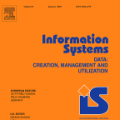This paper draws on perspectives from co-design as an integrative and collaborative design activity and co-simulation as a supporting information system to advance engineering design methods for problems of societal significance. Design and implementation of the Sustainable Infrastructure Planning Game provides a prototypical co-design artifact that leverages the High Level Architecture co-simulation standard. Three role players create a strategic infrastructure plan for agriculture, water, and energy sectors to meet sustainability objectives for a growing and urbaninzing population in a fictional desert nation. An observational study conducts 15 co-design sessions to understand underlying dynamics between actors and how co-simulation capabilities influence design outcomes. Results characterize the dependencies and conflicts between player roles based on technical exchange of resource flows, identifying tension between agriculture and water roles based on water demands for irrigation. Analysis shows a correlation between data exchange, facilitated by synchronous co-simulation, and highly-ranked achievement of joint sustainability outcomes. Conclusions reflect on the opportunities and challenges presented by co-simulation in co-design settings to address engineering systems problems.
翻译:本文件借鉴了共同设计作为综合性和协作性设计活动的观点,以及作为辅助信息系统的共同模拟,以推进具有社会意义的问题的工程设计方法;可持续基础设施规划游戏的设计和实施提供了一种利用高级建筑共同模拟标准的原型共同设计工艺品;三个角色为农业、水和能源部门制定了战略基础设施计划,以实现一个虚构的沙漠国家中不断增长和都市化的人口的可持续性目标;一项观察研究进行了15次共同设计会议,以了解行为者之间的基本动态以及共同模拟能力如何影响设计结果;根据资源流动技术交流,查明农业与灌溉用水需求造成的水作用之间的依赖性和冲突;分析表明数据交换之间的相关性,由同步联合模拟所推动,以及联合可持续性成果的高度分级实现;结论反映了共同设计环境中共同模拟解决工程系统问题所带来的机会和挑战。




